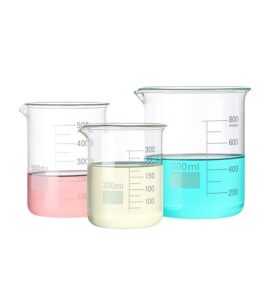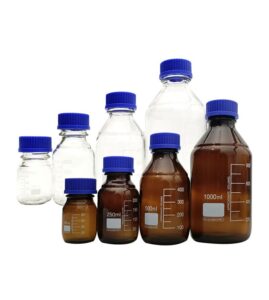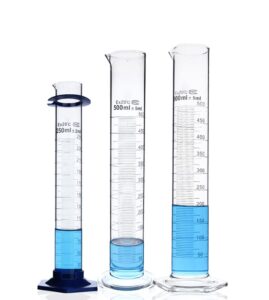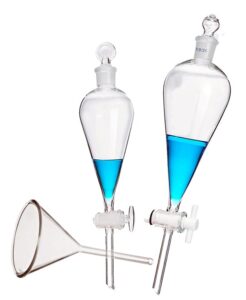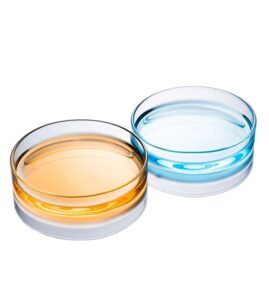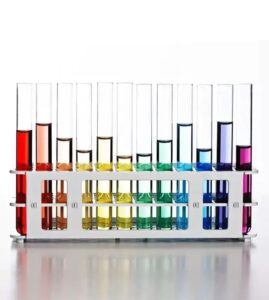Have you ever wondered what makes the beakers and test tubes in a chemistry lab so resilient? Why do they not shatter under extreme conditions or react with the chemicals they come in contact with? The secret lies in the type of glass used: Quartz and Borosilicate. But what exactly are these materials, and how do they differ in their roles within the laboratory?
Quartz glass and borosilicate glass are staples in any chemical laboratory, each serving unique and critical purposes. Understanding their properties and applications is not just interesting but essential for those venturing into the field of chemistry.
Let’s delve deeper into the world of these two types of glass, keeping your curiosity piqued and your thirst for knowledge unquenched.

Exploring the Versatility of Quartz and Borosilicate Glass in Laboratories
Building upon the fundamental understanding of quartz and borosilicate glass, let’s delve deeper into how these materials are integral to the advancements in modern chemical laboratories.
Quartz Glass
Quartz glass is made from pure silicon dioxide (SiO2). It is known for its exceptionally high chemical stability, heat resistance, and corrosion resistance, making it widely used in chemical experiments.
- Chemical Reaction Containers: Due to its corrosion resistance, quartz glass is suitable for holding various chemical reagents such as acids, bases, and salts, and for carrying out chemical reactions. It is also used in high-temperature reactions like high-pressure catalysis and high-temperature synthesis.
- Ultraviolet Transmissive Material: Quartz glass has high transmissivity in the ultraviolet wavelength range, making it ideal for components in UV spectrometers, such as sample cells and optical windows.
- Infrared Transmissive Material: Similarly, it has good transmissivity in the infrared range, which makes it suitable for use in infrared spectrometers, in applications like sample cells and optical windows.
- Laboratory Equipment: Quartz glass is also used to manufacture various laboratory apparatus, such as beakers, test tubes, and titration tubes.
Borosilicate Glass
Borosilicate glass is a type of glass that contains boron (B) and silicon (Si) elements. It possesses good chemical stability, heat resistance, and impact resistance, thus finding broad applications in chemical experiments as well.
- Laboratory Equipment: Borosilicate glass is used to make various laboratory apparatus, including beakers, test tubes, and centrifuge tubes. Its good heat resistance makes it suitable for heating and high-temperature experiments.
- Chemical Reagent Containers: This type of glass is used to store a majority of chemical reagents, such as acids, bases, and salts. Due to its good chemical stability, it does not easily react with most chemical reagents, making it a common choice for chemical reagent containers.
- Optical Components: Borosilicate glass has good transmissivity in the optical wavelength range, thus it can be used to make optical components like lenses and prisms.
- Sealing Materials: Borosilicate glass is also used to produce sealing materials such as gaskets and sealing rings. Its heat and corrosion resistance allow it to maintain sealing performance for a long duration.
- Analytical Instrument Components: It can be used to make parts for analytical instruments, such as chromatography columns and sample cells for spectrometers. Its good transmissivity and chemical stability ensure the accuracy of analytical results.
Quartz glass and borosilicate glass have extensive applications in chemical experiments. They are utilized to make various laboratory apparatus, chemical reagent containers, optical components, sealing materials, and components for analytical instruments. Choosing the appropriate type of glass not only ensures the smooth progression of experiments but also enhances their efficiency and accuracy.

Detailed Comparison of Quartz and Borosilicate Glass Properties for Laboratory Use
To provide a clearer understanding of why certain types of glass are preferred for specific laboratory applications, it’s essential to compare the physical properties of quartz and borosilicate glass. These properties play a significant role in determining the suitability of each glass type for different experimental conditions and requirements.
Comparative Analysis of Quartz and Borosilicate Glass Properties
| Property | Quartz Glass | Borosilicate Glass |
|---|---|---|
| Thermal Resistance | Up to 1200°C | Lower than quartz, but with low thermal expansion |
| Chemical Resistance | Excellent, resistant to most acids and corrosive materials | Good, resistant to many chemicals including acids and alkalis |
| Optical Clarity | Highly transparent to UV light | Good, but less UV transmissive than quartz |
| Density and Hardness | Denser and harder, resistant to scratches | Lighter, slightly more prone to scratches but still durable |
| Refractive Index | Higher, affecting light passage | Lower, beneficial for applications requiring less refraction |
Both quartz and borosilicate glass have unique physical properties that make them invaluable in different laboratory contexts. Quartz glass, with its high thermal and chemical resistance, is ideal for high-temperature and sensitive experiments. On the other hand, borosilicate glass, known for its durability and thermal shock resistance, is more suited for general lab use. Understanding these differences ensures that the right type of glassware is selected, maximizing both safety and effectiveness in laboratory work.
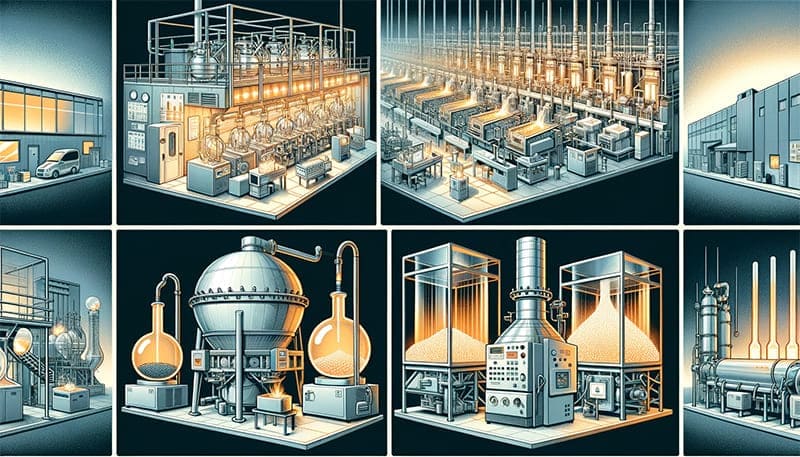
Manufacturing and Quality Control of Quartz and Borosilicate Lab Glassware
An in-depth understanding of the manufacturing processes and quality control measures for quartz and borosilicate glass is essential in appreciating their roles in laboratory settings. These processes not only determine the physical properties of the glassware but also their reliability and safety in various experimental conditions.
The manufacturing process of quartz glass involves melting high-purity silica at extremely high temperatures, creating a material with superior chemical and thermal resistance. This process ensures the elimination of impurities, which is crucial for applications requiring high levels of precision and stability. Borosilicate glass, on the other hand, is made by combining silica with boron trioxide at lower melting points. This combination results in glass with a low coefficient of thermal expansion, making it resistant to thermal shock and suitable for general laboratory use.
Quality control measures are paramount in the production of both types of glass. For quartz glass, stringent controls are necessary to maintain its purity and optical clarity, especially for applications involving UV light and high temperatures. For borosilicate glass, consistent quality checks ensure its durability and resistance to chemical corrosion. Adherence to international standards like ISO and ASTM is critical in guaranteeing the safety and performance of these glassware types in laboratory environments.
The manufacturing processes and quality control standards of quartz and borosilicate glassware play a pivotal role in their suitability for specific laboratory applications. Understanding these aspects adds another layer of appreciation for the complexity and importance of laboratory glassware in scientific research.

Evaluating the Environmental Impact and Sustainability of Quartz and Borosilicate Lab Glassware
In contemporary laboratory settings, the environmental impact and sustainability of materials are increasingly important factors. A comparative lifecycle analysis of quartz and borosilicate glassware sheds light on their respective longevity, recyclability, and ecological footprints, which are crucial considerations for labs committed to sustainable practices.
Quartz glass, renowned for its exceptional durability and resistance to extreme conditions, tends to have a prolonged service life in rigorous laboratory environments. This extended usability can mitigate the higher production costs and energy consumption associated with its manufacturing, leading to a reduced environmental impact over its lifespan. However, the complexity of recycling high-purity quartz glass can be a limiting factor in its overall sustainability profile.
On the other hand, borosilicate glass offers a more eco-friendly lifecycle. Its production requires lower temperatures, thus consuming less energy, and it is more readily recyclable compared to quartz glass. These factors make borosilicate glass an attractive option for environmentally conscious labs, despite its potentially shorter lifespan in certain applications. This shorter lifecycle can be offset by the material’s lower production impact and greater recyclability.
In wrapping up, the selection of glassware in laboratories is no longer solely based on immediate functional requirements. The lifecycle analysis, including aspects of sustainability, recyclability, and environmental impact, is pivotal in making informed, eco-friendly choices. Labs now have to balance these considerations with their specific scientific needs to make decisions that align with broader environmental goals.
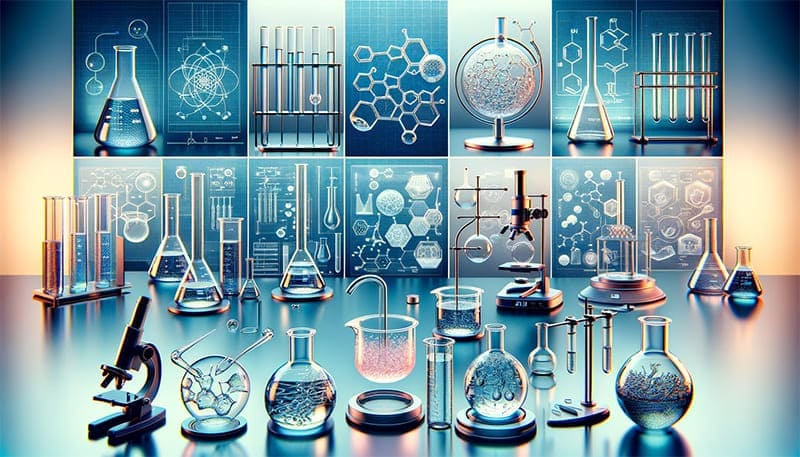
Glassware Selection for Various Scientific Disciplines
The choice of laboratory glassware greatly impacts the efficiency and accuracy of experiments in different scientific fields. Here’s an updated table reflecting the most suitable types of glassware for specific disciplines:
Recommended Glassware by Field of Science
| Scientific Discipline | Recommended Glass Type | Rationale |
|---|---|---|
| Chemistry | Borosilicate Glass | Frequently used for its thermal shock resistance and chemical stability, ideal for a wide range of chemical experiments. |
| Biology | Borosilicate Glass | Optimal for biological samples and temperature-sensitive reactions due to its resistance to thermal shock and minimal interaction with chemicals. |
| Physics | Quartz Glass | Preferred for optical measurements and experiments requiring high refractive index and clarity. |
| Materials Science | Depends on Experiment | Quartz glass for experiments involving high temperatures; borosilicate glass for general analyses due to its versatility. |
This table guides researchers and lab technicians in selecting the appropriate glassware, aligning with the specific requirements of their scientific discipline to ensure more precise and reliable experimental outcomes.
Essential FAQs on Quartz and Borosilicate Glass in Laboratory Usage
To further enhance understanding and clarify common questions about quartz and borosilicate glass in chemical laboratories, we have prepared a set of frequently asked questions. These FAQs are designed to provide concise and relevant information, directly addressing the most common inquiries related to our main topic.
Frequently Asked Questions
- What is the main difference between quartz and borosilicate glass?
- Quartz glass, made mainly from silicon dioxide, excels in high heat resistance and chemical stability. Borosilicate glass, composed of boron and silicon, is known for its low thermal expansion and excellent resistance to thermal shock.
- Why is Borosilicate Glass often the first choice for laboratory glassware?
- Borosilicate glass is favored in many laboratory settings due to its exceptional resistance to thermal shock, chemical corrosion, and its versatility for a wide range of general lab applications, making it practical and cost-effective.
- Can borosilicate glass be used for UV spectroscopy?
- While borosilicate glass has good optical clarity, it is less transparent to UV light compared to quartz glass, thus not as suitable for UV spectroscopy applications.
- Is borosilicate glass environmentally friendly?
- Yes, borosilicate glass is more energy-efficient to produce and more easily recyclable than quartz glass, making it a more environmentally friendly option.
- How do I choose between quartz and borosilicate glass for my lab?
- Consider your lab’s specific needs: use quartz glass for high-temperature and UV-intensive experiments, and choose borosilicate glass for general laboratory applications due to its durability and versatility.
These FAQs aim to simplify the decision-making process for choosing the appropriate type of glassware in laboratory settings. By understanding the distinct advantages of quartz and borosilicate glass, researchers and lab technicians can select the most suitable materials, thereby optimizing the efficiency and effectiveness of their scientific endeavors.
Conclusion
As we journey through the dynamic world of scientific exploration, the choice between quartz and borosilicate glass in our laboratories is more than just a technical decision – it’s a step towards precision, safety, and sustainability. Embrace the knowledge, make informed choices, and propel your scientific endeavors to new heights with the right glassware in your lab arsenal.


